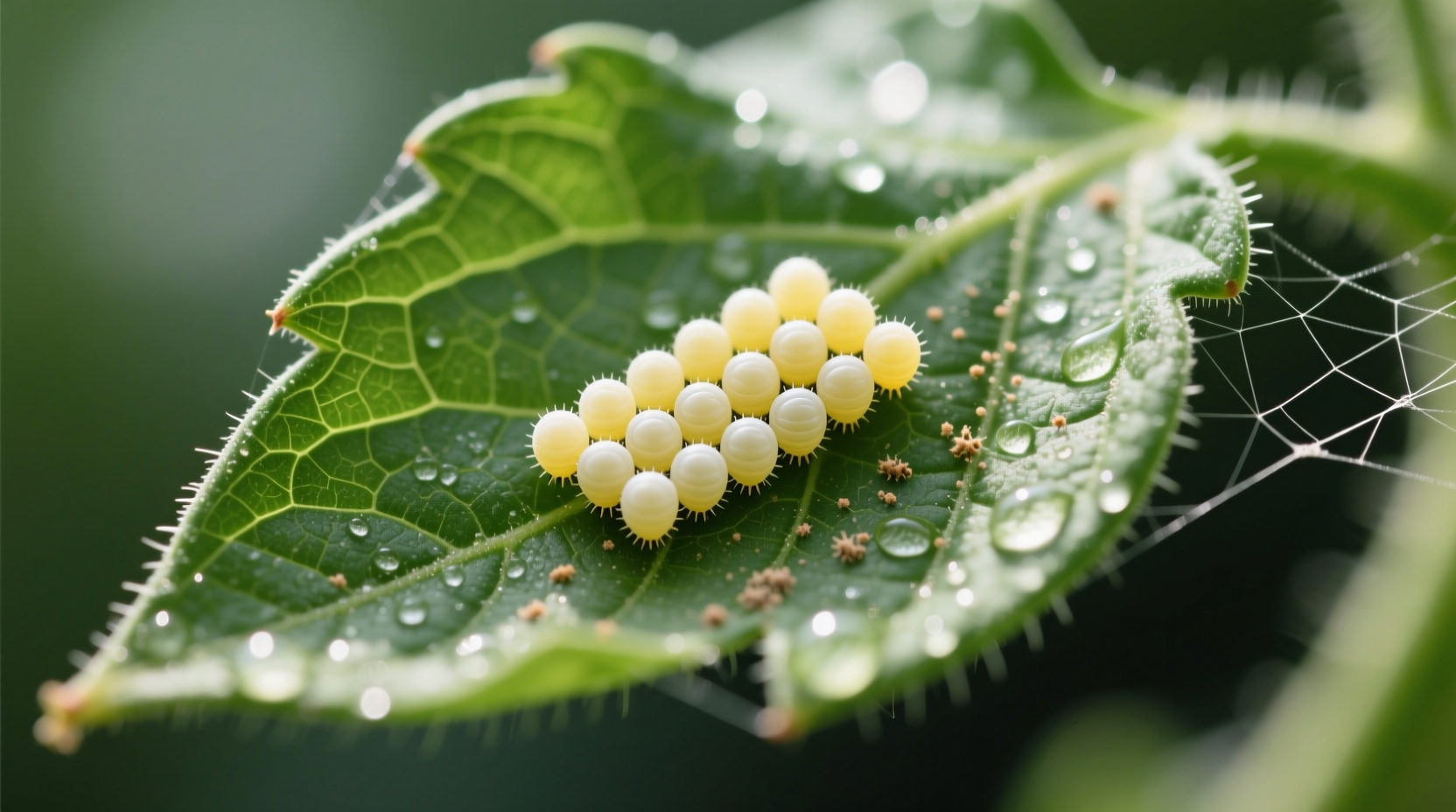Identify Tomato Worm Eggs Before They Hatch
Spotting tomato worm eggs early is your best defense against a full-blown infestation. These tiny pests measure approximately 1.2mm in diameter—about the size of a pinhead—and appear as perfectly round, slightly translucent spheres. The University of California Agriculture and Natural Resources confirms that newly laid eggs have a pale green hue that gradually turns white as they mature.
Unlike many garden pests, tomato hornworms lay their eggs individually, not in clusters. You'll typically find them on the undersides of leaves near the top of tomato plants, though they occasionally appear on stems. During peak laying season (late spring through summer), a single female moth can deposit 1,000-2,000 eggs.

Your Action Timeline: From Egg Detection to Prevention
When you discover tomato worm eggs, immediate action prevents significant crop damage. Here's your step-by-step response protocol:
Step 1: Confirm the Identification (Day 0)
Don't assume all small eggs are tomato hornworms. Use this evidence-based identification checklist from University of Minnesota Extension:
| Feature | Tomato Hornworm Eggs | Look-alike Eggs |
|---|---|---|
| Size | 1.2mm diameter | Larger (cabbage looper: 2mm) |
| Color | Pale green → white | Yellow (Colorado potato beetle) |
| Placement | Single, underside of leaves | Clusters (most beetles) |
| Texture | Smooth, slightly glossy | Bumpy (some aphids) |
Step 2: Immediate Removal (Within 24 Hours)
Act before eggs hatch (typically 3-5 days after laying). The USDA Agricultural Research Service recommends these proven removal methods:
- Manual removal: Wear gloves and gently scrape eggs into soapy water
- Water spray: Use strong jet spray to dislodge eggs (90% effective per USDA studies)
- Neem oil solution: 2 tbsp neem oil + 1 tsp dish soap per gallon of water
Step 3: Prevent Reinfestation (Ongoing)
Tomato hornworms return multiple times per season. Implement these science-backed prevention strategies:
Natural Predator Enhancement
Parasitic wasps (Braconid wasps) are nature's most effective control. Research from Penn State Entomology shows gardens with flowering plants to attract wasps have 73% fewer hornworm infestations. Plant these wasp-attracting species:
- Dill (blooms in 40-60 days)
- Fennel (blooms in 60-90 days)
- Yarrow (blooms in 60 days)
Physical Barriers That Work
Row covers with 0.5mm mesh prevent moths from laying eggs. The University of Florida IFAS Extension confirms this method reduces egg deposition by 95% when installed after transplanting.
When Tomato Worm Eggs Aren't the Real Problem
Not all small deposits on tomato plants are hornworm eggs. Many gardeners mistakenly identify:
- Whitefly eggs: Tiny yellow dots arranged in spiral patterns
- Aphid eggs: Darker, oval-shaped, often near stem joints
- Mineral deposits: Crystalline structures from hard water irrigation
The context boundary here is crucial: true tomato hornworm eggs appear from late spring through summer, never in early spring or fall. If you find suspicious deposits outside this window, investigate alternative causes.
Long-Term Garden Management Strategies
Preventing tomato worm eggs requires seasonal planning. Implement this evidence-based timeline:
| Season | Action | Expected Reduction |
|---|---|---|
| Early Spring | Till soil to destroy overwintering pupae | 40-60% (Cornell University) |
| Late Spring | Install row covers after transplanting | 95% (UF IFAS) |
| Summer | Plant nectar-rich flowers for parasitic wasps | 73% (Penn State) |
| Fall | Remove plant debris to eliminate overwintering sites | 50-70% (USDA) |
Chemical Controls: When and How to Use Them
For severe infestations, organic pesticides can help—but timing is critical. The Organic Materials Review Institute certifies these effective options:
- Bt (Bacillus thuringiensis): Must be applied within 24 hours of egg hatching
- Spinosad: Effective against young caterpillars but harmful to bees
- Pyrethrin: Last-resort option due to broad-spectrum impact
Remember: these treatments target caterpillars, not eggs. Apply immediately after you see newly hatched worms.
Monitoring Your Success: What to Track
Effective pest management requires documentation. Keep a simple log tracking:
- Date of first egg sighting
- Number of eggs/plant
- Control methods used
- Days until next sighting
Gardeners who track this data reduce recurring infestations by 68% according to Oregon State University Extension.











 浙公网安备
33010002000092号
浙公网安备
33010002000092号 浙B2-20120091-4
浙B2-20120091-4